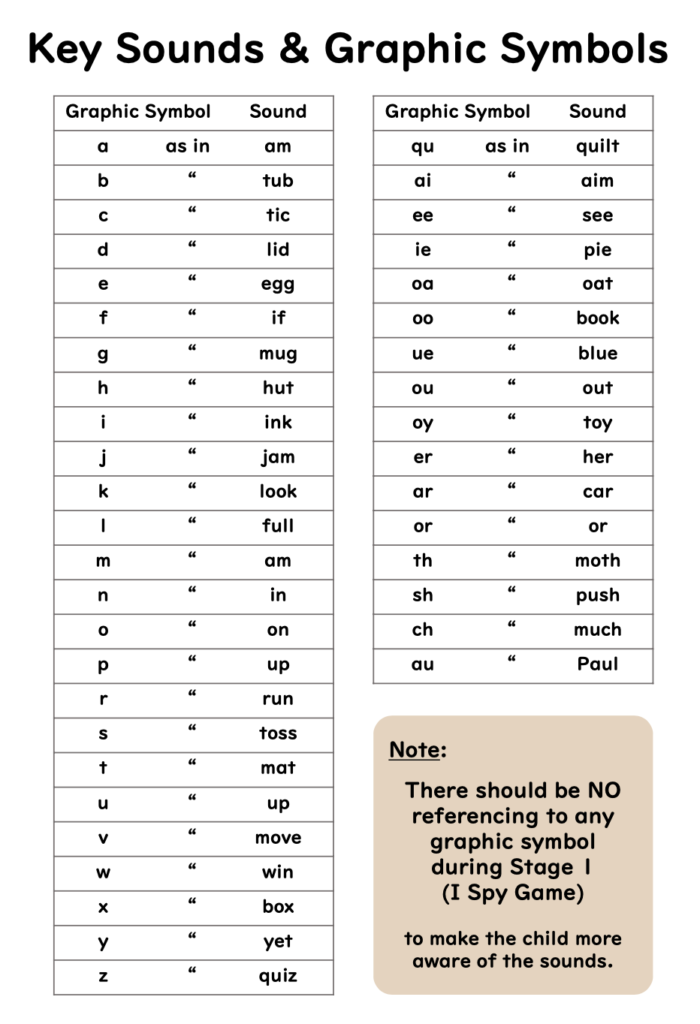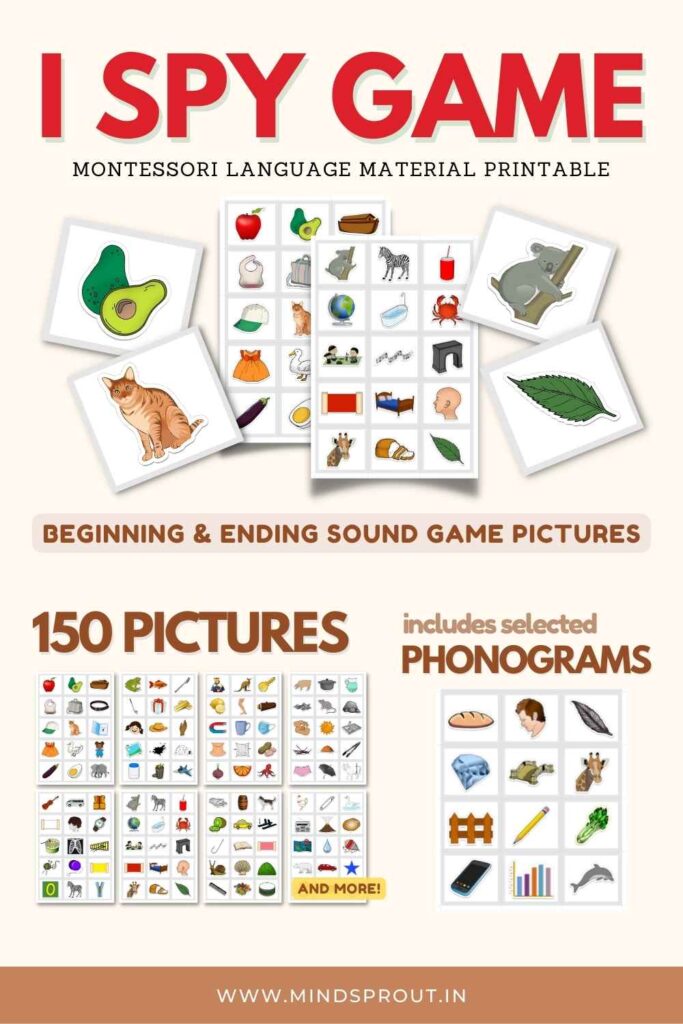Preparations From Birth
In Montessori, there are various approaches to teaching reading and writing. I would be sharing the different stages of one that is from an AMI booklet by Muriel I. Dwyer.
In preparation to these stages, from birth, the child should be aided to build his vocabulary and to express himself freely and fluently. The following are some activities to support that:
- Storytelling
- Reading aloud
- Poems and songs
- Naming the Environment and Materials
- Games: Orientation game, Question game, Action game
- News periods (video)

Building Phonemic Awareness
When the child is already fluent in speaking (from around the age of two), the sound games or I Spy games should be started to make them aware of the sounds they use in speech.
Increasing phonemic awareness is the first stage to learning reading and writing. We make it fun by doing I spy games or sound games!
Phonemic awareness happens when the child knows that each word is made up of sounds and eventually becomes able to identify and manipulate sounds to form words.

What are the Key Sounds in English?
There are 40 common key sounds to introduce initially. These key sounds will help the child unlock more stages as he continues to explore the art of language. The key sounds, based on the Muriel Dwyer booklet, are as follows:

As the prepared adult, these should be memorized before proceeding.
It is important to note that each sound is represented with only one symbol or form. For instance, the symbol ai is also given for sounds spelt with ‘ay’, ‘a-e’, ‘ei’, the symbol j for ‘ge’ or ‘gi, and so on.
This is to provide the child the visual keys associated with each sound. From his awareness of sounds that form words, we want to enable him to form words together, expressing his thoughts at will and without difficulty.
At this stage, we should not be concerned with spelling, only in them being free to express in the form of writing without reliance to the adult or restriction by given words or pictures. Let’s delve in to Stage 1 of the Keys!
Stage 1: Sound Games or I Spy Games
Presentation
- The adult says, “I spy with my little eye something that begins with ‘f’ (say the sound, not the name of the letter). The object or picture could be ‘fish’ or ‘fork’.
- Make it very obvious initially. You can put the single object or picture on the table or say something like “I spy something that John is holding in his hand that begins with ‘f'”.
- The words in the game should not be new to the child, so they can focus not on learning new vocabulary but on the sounds.
2. Make it more difficult gradually by adding objects on the table and making the child guess which object has the initial sound.
3. Do this until he is able to find objects that match any initial sound given.
4. Next, help the child to hear the sounds at the end and in the middle of the words.
- Ask the child to find, for example: fish, “something that begins with ‘f’ and ends with ‘sh’
- When the child has found the word, say to him –
- “fish, what sound does it begin with?” The child then answers ‘f’.
- Then, “what sound does it end with?” Child says ‘sh’,
- Now, what is the sound in the middle?” “f-i-sh”
(Say the word slowly until the child can find the sound in the middle).

5. Begin working with words with three sounds, then slowly increase to four sounds and so on. The adult must guide the child each step until the child is able to work out every sound of any word by themselves.
6. Ask the child to think of words and to break each of them into their sounds.
7. Ask the child to think of words beginning or containing any of the sounds, until they are able to give groups of words for all 40 key symbols.
“IT IS ESSENTIAL THAT THE WHOLE OF STAGE 1 (SPY GAME) IS EXPERIENCED WITHOUT ANY REFERENCE TO THE SANDPAPER LETTERS, THE MOVABLE ALPHABET, OR TO READING AS THE AIM OF THIS GAME IS TO MAKE THE CHILDREN AWARE OF THE SOUNDS THEY USE IN SPEECH, and above all, to make the process of exploring words for their sounds an enjoyable pastime so that the child will continue the activity, even when he is alone.”
Muriel Dwyer (1977)
Using Picture Cards
I have compiled 150 pictures for this game, with 3 for each beginning and ending sounds. This is a big assortment of words you can use during preparatory work through a three-period lesson and of course during the sound games.

- And even after, for building words using the movable alphabet. More on that later.
- If you’re interested, check out the Sound Game cards here.
- Proceed to read about the next stage: introduction of letter symbols.
If this article has been helpful, pin it and share the link to your friends. TAG @MindSproutPH in your IG stories and receive special discount at our store! 🧡


